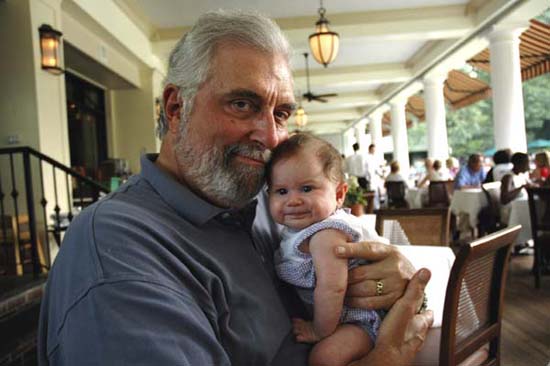The Sopranos - The Tony Got Wacked Theory In Detail
As I wrote right after seeing the final episode of The Sopranos, I believed that David Chase had decided to let us all decide on the ending for our selves. However, the most common theory on the web has been that the one that believes that the final blackout was the moment of Tony Soprano's death.
If you subscribe to that theory or would just like to think about it some, check out Bob Harris' website. Harris is a writer who was also once a Jeopardy champion.
As Harris says, he could be wrong, but he has strung together every possible element of an intricately woven web of references and directorial choices that point to Tony's death. The premise of this theory is the quote by David Chase that the meaning of the final scene is "all there on the screen."
For me, the truth of theories such as this depends entirely on a knowledge of the kind of person and writer that Chase is. None of us have any idea of that. Absent that knowledge, defining the meaning of the ending is very much like most conspiracy theories. The conspiracy theorist first settles on the nature of the conspiracy and then collects facts that fit that theory. Facts that don't fit are either ignored or debunked until only the theorists view is left standing.
As you will see in Harris essay, he views Chase as having made virtually each and every choice in that scene, indeed in the whole episode, provide foreshadowing and references to death, and specifically to the death scene in The Godfather in which Michael emerges from the bathroom and shoots Solazzo and the police Captain.
I have no doubt that the movement of the suspicious "Members Only" guy toward the bathroom is meant to remind us of that reference. But it could be just another means of suggesting a shooting was imminent. After all, the whole scene is full of such foreboding. Chase could have been pointing us in that direction only to pull us up short and make us painfully aware of our own assumptions and expectations. I don't know about you, but I generally don't take a paranoid perspective when public places are portrayed in movies.
So in the end, we would need to know the kind of writer David Chase is. Does he meticulously plan and rework every word he writes or does he go largely on his artistic instinct, taking advantage of events and chance as they occur on the page and on the set? Did he have the actors consume the famous onion rings as if they were communion wafers to mimic a funeral mass, as Harris suggests, or did it just feel right to Chase that the meal become another reference point to the Catholic faith of the Soprano family.
I don't know, but damn, it is still fun to contemplate. That, in the end, is the final test of great art.
If you subscribe to that theory or would just like to think about it some, check out Bob Harris' website. Harris is a writer who was also once a Jeopardy champion.
As Harris says, he could be wrong, but he has strung together every possible element of an intricately woven web of references and directorial choices that point to Tony's death. The premise of this theory is the quote by David Chase that the meaning of the final scene is "all there on the screen."
For me, the truth of theories such as this depends entirely on a knowledge of the kind of person and writer that Chase is. None of us have any idea of that. Absent that knowledge, defining the meaning of the ending is very much like most conspiracy theories. The conspiracy theorist first settles on the nature of the conspiracy and then collects facts that fit that theory. Facts that don't fit are either ignored or debunked until only the theorists view is left standing.
As you will see in Harris essay, he views Chase as having made virtually each and every choice in that scene, indeed in the whole episode, provide foreshadowing and references to death, and specifically to the death scene in The Godfather in which Michael emerges from the bathroom and shoots Solazzo and the police Captain.
I have no doubt that the movement of the suspicious "Members Only" guy toward the bathroom is meant to remind us of that reference. But it could be just another means of suggesting a shooting was imminent. After all, the whole scene is full of such foreboding. Chase could have been pointing us in that direction only to pull us up short and make us painfully aware of our own assumptions and expectations. I don't know about you, but I generally don't take a paranoid perspective when public places are portrayed in movies.
So in the end, we would need to know the kind of writer David Chase is. Does he meticulously plan and rework every word he writes or does he go largely on his artistic instinct, taking advantage of events and chance as they occur on the page and on the set? Did he have the actors consume the famous onion rings as if they were communion wafers to mimic a funeral mass, as Harris suggests, or did it just feel right to Chase that the meal become another reference point to the Catholic faith of the Soprano family.
I don't know, but damn, it is still fun to contemplate. That, in the end, is the final test of great art.
Labels: The Sopranos


